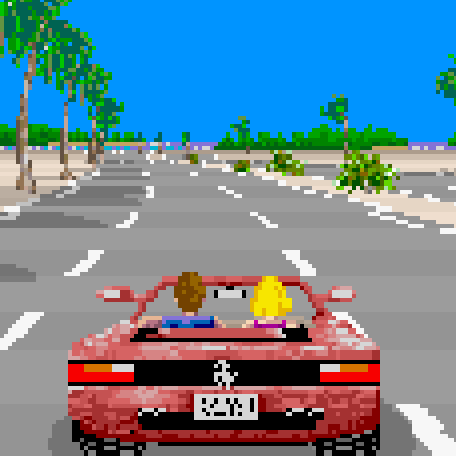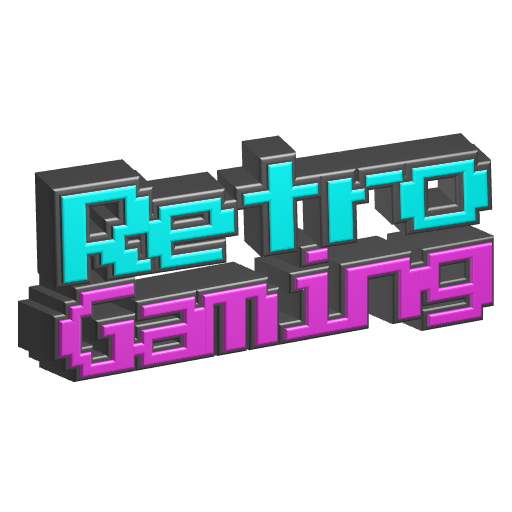- cross-posted to:
- amiga@sopuli.xyz
- cross-posted to:
- amiga@sopuli.xyz
Just in time for the spookiest time of year, a game that features not just ghouls, but also ghosts as well. And spooky haunted turtles.
Ghouls 'n Ghosts (Dai Makaimura in Japan) is a classic 1988 Capcom arcade game and sequel to the highly popular Ghosts 'n Goblins. Like its predecessor, you play Arthur, a knight who must save a princess by battling through six spook-filled levels. Along the way, you collect a variety of weapons (sometimes against your will!), beat bosses, avoid wizards in chests, and generally work your way from left to right. You get two hits per life, with your armour disappearing after the first. To help you out, you can collect a golden set of armour that has a charge attack, but you seldom get a chance to use it.

The arcade original is just gorgeous in every respect, with masterful pixel art graphics, music that is both spooky and catchy, and controls that feel fluid and responsive. Its levels are varied and interesting, and its bosses challenging. In fact, the whole game is a challenge, with the difficulty ramping right up from the end of level 1. You’re never given a moment to breathe, as zombies continually spill out of the ground and attack you. Gotta keep those quarters coming! And if you pick up the wrong weapon (basically anything but the knife), you’re stuck with it, unless you chance upon a better pick up.
The game was ported all over the place, with varying degrees of success. It came towards the end of the life of the 8-bit micros, so hopes wouldn’t have been high… so how did they do? Actually, not bad. Let’s take a look.

There’s not a lot to pick between the 8-bit and 16-bit micro versions, with each of them suffering similar problems, the worst of which is the limitations of a single-button joystick. This means that firing upwards (an essential part of some levels) is combined with an initial jump, causing you to jump into the enemy you’re trying to dispatch!
The Amstrad suffers all of this, but also some pretty gross push scrolling, which makes it difficult to avoid some enemies. It otherwise looks okay, I guess, with colourful, distinct graphics. It controls fairly well, despite the scrolling limitations, but it is definitely the hardest of the three 8-bit micros. Sound is pretty much non-existent in-game, but it has a lovely title screen rendition of the Ghouls 'n Ghosts theme. Shame it couldn’t play in-game.
Not a bad effort, if a little clunky.

The C64 version is distinct from the Amstrad and Spectrum, as is fairly common with games from this era. It has much smaller graphics, but some lovely smooth scrolling. Some of its levels feel incredibly sparse, with very few enemies, which makes it a lot easier than the Amstrad version. Unlike other 8-bit versions, the C64 version has in-game music… though, inexplicably, opts for a custom theme rather than the very familiar Ghouls 'n Ghosts music. It’s very good, but also feels very out of place…

I start a lot of these Spectrum sections with “you’ll have to trust me on this…”, and this game is no exception. The Spectrum version shares a lot in common with the Amstrad version, but the overall package is a lot slicker. The scrolling is smooth (at least for a Spectrum), the sound is better, and the control feels fluid and “right”. This version, of the three 8-bit micros, feels the most like the arcade. That said, it looks very basic, and is certainly the worst looking of the three, with monochrome graphics that feel sparse and bland. But what did you expect?
Not a bad effort though, and well worth a look for those interested in seeing this ancient machine pushed to its limits. You just need to squint a little…

Sigh. There’s just something deeply disappointing about playing Amiga arcade ports from this era. It’s how a teacher must feel when an obviously gifted student just phones it in and scrapes a D. Amiga Ghouls 'n Ghosts is that kind of port… It looks kind of okay in stills, but when it moves it reveals itself. Slow, jerky scrolling. Lacklustre colours. A small playfield… Like the C64, it goes its own way for music on level 1, and while the tune is suitably spooky, it just never seems to get going.
Overall, its not a terrible port. Its certainly playable. Its just… the Amiga could do so much more, you know?

Over on the consoles, things were a lot better. Starting with the most basic conversion, that of the Sega Master System, we begin to see a lot more of the original’s DNA. The music is here in-game, a plinky plinky chip tune rendition of the original that is perfectly serviceable. The graphics are good and colourful, if a little blocky. It plays really well, and even adds in some light RPG elements in the form of shops in which you can upgrade your equipment. Not sure why this version alone got that addition, but it certainly adds depth.
Overall, I think you’d be happy with this if you were a Master System owner in the late 80s.

Over on the Master System’s big brother, we have perhaps the most impressive port of all (though not the most accurate). Programmed by Yuji Naka (of Sonic The Hedgehog fame), the Megadrive port is extremely competent. Everything is here and incredibly faithful to the original. The music is amazing, managing to sound both faithful and unmistakably Megadrive. The graphics are on point, with just a slightly gaudy palette letting it down slightly. Best of all, it plays incredibly well.
If you want to experience just one “interpretative” port (rather than one of the identical or emulated ports), give this a go.

A rare spawn - a Supergrafx version! This little known successor to the PC Engine got very few games, and Ghouls 'n Ghosts was perhaps the most famous. Like the Megadrive, it’s a highly faithful and very impressive conversion. Its graphics are perhaps a little more detailed than the Megadrive, with a more refined palette that can sometimes look a little drab. Still, it’s a brilliant conversion, and well worth a look (if you can track it down!)

Onto the Sharp X68000 “port”…
It’s hard to know what to do with this version (and the Playstation one), since they don’t hit the same curiosity triggers as, say, the Amstrad version. It doesn’t really feel like a conversion at all, it feels exactly like the arcade game. And with good reason… the X68000 shared a lot of hardware similarities with the arcade games of the time, and was even used by Capcom as the CPS development machine. So of course it feels great.
But we’re here to see the brave leaps of faith and the tragic failures of ambition… and this ain’t that.
Still, if you want to see a truly arcade perfect port of Ghouls 'n Ghosts, have a look at this…

… Or this. The PlayStation version is, presumably, using some kind of emulation and a dump of the arcade ROM. As such, I’m tempted to disqualify it… but I wanted to include it purely to point out that even this method doesn’t always guarantee perfection.
There’s something busted about the brightness in this version. It’s way too dark. For my screenshots above, I’ve had to give it a bit of a crank up a notch or two - unscientific, yeah, but otherwise it was very hard to see anything! It could be a problem with my MiSTer, but the few YouTube videos I’ve seen suggest the same problem…
So there you have it. Ghouls 'n Ghosts, a cool game wherever you play it, and a very hard one at that. Try the Megadrive/Genesis port, if you can try just one.
Happy Halloween! 🎃


It is a Halloween tradition of mine to play through at least one game in the Ghosts 'n Goblins series every October and the past few years I’ve been branching out into ports of the games that I wasn’t previously familiar with.
This list and write up so absolutely incredible and it’s nice to see someone share a lot of my thoughts on them.
Especially with your
This is pretty much what I have to do, too. “I promise, it looks weird but it’s actually really good” is how I have to explain my love for the ZX Spectrum in general.